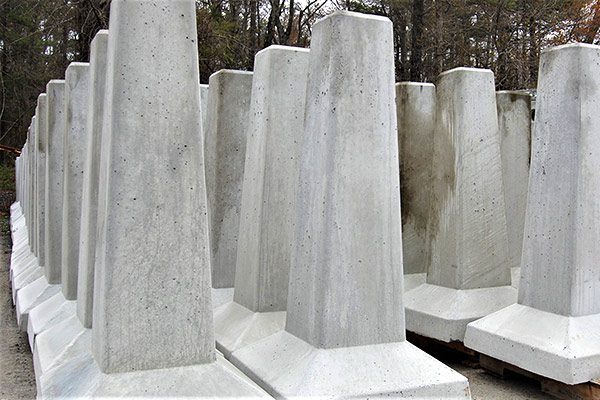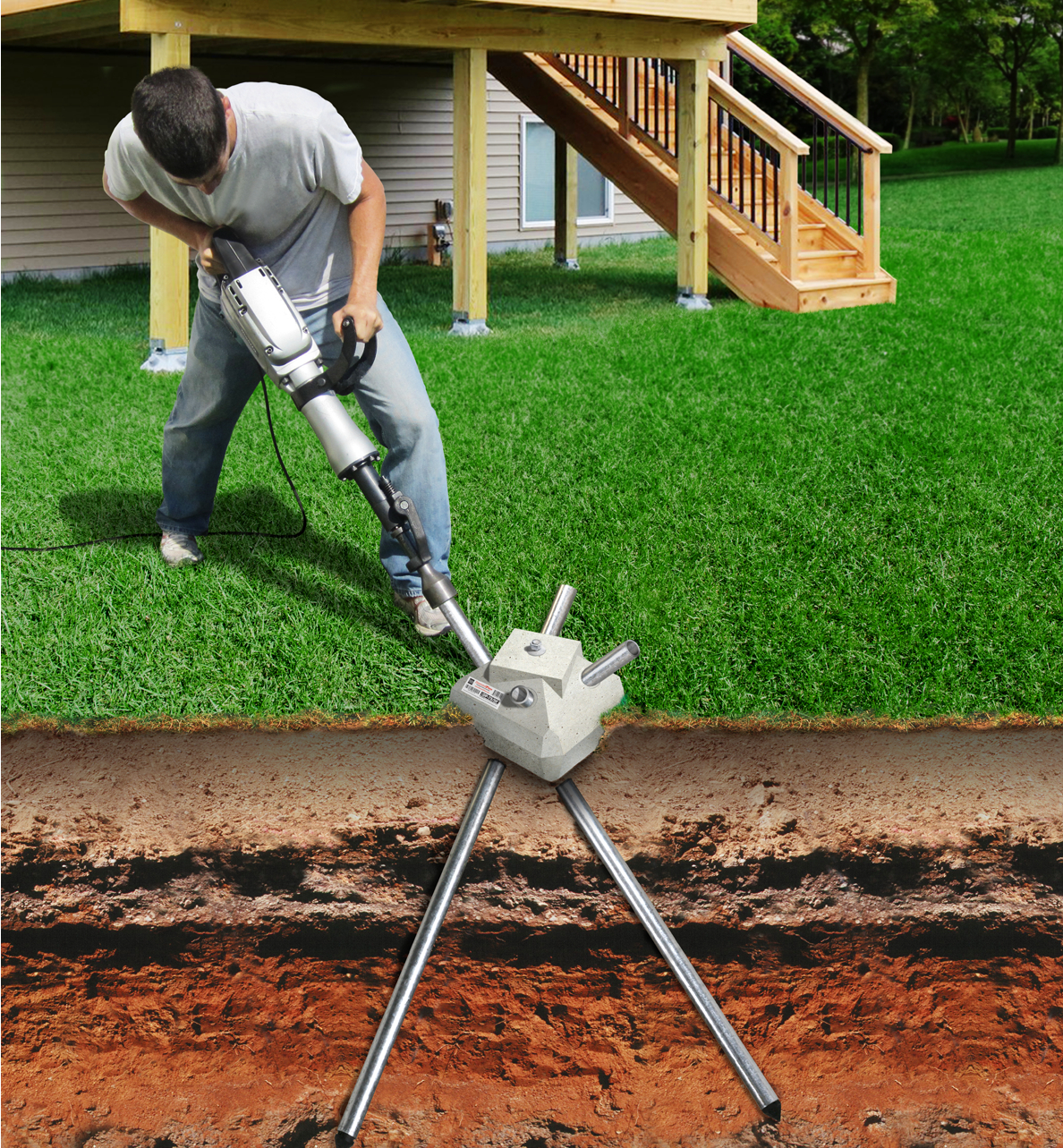Deck Footings Revealed: Comprehending the Secret Parts of a Trusted Deck Framework
Deck Footings Revealed: Comprehending the Secret Parts of a Trusted Deck Framework
Blog Article
Picking the Right Deck Footings for Security and Resilience
When it involves developing a deck, among one of the most essential choices you will make is choosing the appropriate footings for stability and longevity. The durability and safety of your deck depend greatly on the kind of footings you select, as they provide the important assistance and security to stand up to the test of time. With a myriad of alternatives available, it can be frustrating to figure out which footings are best fit for your particular needs. In this conversation, we will explore the different kinds of deck grounds, consider the crucial variables to evaluate when deciding, and look into the pros and cons of different options. By the end, you will have a clearer understanding of the selections available and be much better equipped to make an educated choice for your deck task.
Sorts Of Deck Grounds
These footings consist of a cylindrical hole filled with concrete, which offers a strong foundation for the deck articles. Concrete pier grounds are reasonably easy to set up and supply excellent security, making them a preferred option for several deck jobs.
These footings are installed by screwing them right into the ground, which produces a safe structure for the deck. They likewise allow for easy change and progressing of the deck if needed.
Conversely, some contractors go with precast concrete grounds. These footings are made of sturdy concrete and can be found in different shapes and sizes to suit various deck designs. Precast concrete grounds are hassle-free to set up and offer a secure base for the deck framework.
Ultimately, another option is the post-in-anchor footing system. This kind of footing entails driving a metal anchor right into the ground and affixing it to the deck blog post. It provides flexibility in regards to positioning the deck blog posts and is suitable for decks with lightweight frameworks.
When choosing the right sort of deck footing, it is important to take into consideration variables such as soil problems, deck lots, and regional building ordinance (Deck Footings). Consulting with an expert contractor or structural designer can help ensure the appropriate ground is chosen for a steady and safe deck
Factors to Consider When Picking Footings
When picking the appropriate grounds for a deck, it is important to very carefully consider different elements such as soil problems, deck load, and adherence to neighborhood structure codes. These aspects play a significant function in ensuring the security and durability of the deck structure.
One of the primary factors to take into consideration is the dirt problems. The sort of dirt on which the deck will certainly be built establishes the sort of grounds needed. Decks developed on sandy or loose dirts might need much deeper grounds to provide sufficient assistance and prevent settling. On the other hand, decks constructed on clay or large dirts might need footings that can accommodate the soil's propensity to increase and agreement.
One more important factor is the deck lots. The weight of the deck, consisting of the products made use of and any kind of potential real-time loads such as furnishings or celebrations, should be taken into consideration when picking grounds. The footings must be made to birth the weight of the deck and distribute it evenly to stop any type of structural problems or failures.
Last but not least, adherence to local building ordinance is vital. Building regulations vary from region to region, and it is vital to adhere to the specific requirements established by the neighborhood authorities. Deck Footings. These codes make sure that the deck is developed safely and satisfies the essential criteria for architectural stability and load-bearing capability
Concrete Footings: Benefits And Drawbacks

When made use of as the structure for a deck,Concrete footings use numerous advantages and negative aspects. On the silver lining, concrete read this grounds offer superb stability and durability. Concrete is a stiff and solid material that can support hefty loads and hold up against different climate condition. It also has a lengthy lifespan, making it a dependable choice for lasting usage.
Another advantage of concrete footings is their adaptability. They can be put right into various sizes and shapes look at here to suit various deck designs and setups. Concrete grounds can be customized to fit the details requirements and needs of the deck structure.
Nonetheless, there are likewise some disadvantages to using concrete grounds. One significant downside is the cost and labor associated with their installment. Concrete footings need excavation and commonly require the assistance of heavy equipment. This can raise the overall expense of the deck job and may need expert help.

Helical Piers Vs. Sonotubes: Which Is Much better?
In considering the structure choices for a deck, the comparison in between helical piers and sonotubes is important in establishing the superior choice. Helical piers, also referred to as screw stacks, are steel shafts with helical plates connected to them. They are turned right into the ground using hydraulic equipment, offering a steady and resilient foundation for the deck. On the other hand, sonotubes are round types made from cardboard or fiber material that are full of concrete. They are put in an opening went into the ground and offer support for the deck.
When it pertains to security and sturdiness, helical piers have the upper hand. The helical plates on the piers produce a solid grasp with the dirt, stopping any kind of motion or shifting of the deck. This is specifically valuable in locations with unpredictable or moving soil problems. Sonotubes, on the various other hand, depend solely on the concrete loading for security, which might not provide the same degree of stamina and resistance.
In terms of installment, helical piers are relatively less complicated and faster to set up compared to sonotubes. The hydraulic machinery made use of to twist the piers right into the ground ensures a efficient and fast process. Sonotubes, on the other hand, require excavating holes and pouring concrete, which can be time-consuming and labor-intensive.
In addition, helical piers are a more versatile option. If required, they can be used in different soil conditions and can be changed or strengthened. Sonotubes, on the various other hand, might require extra assistance, such as rebar, in certain soil problems or areas with high tons requirements.
Picking the Right Footings for Your Deck's Measurements
For ideal structural integrity, it is important to thoroughly select the proper footings that line up with the measurements of your deck. The dimensions of your deck, including its size, height, and size, play a substantial duty in establishing the kind and size of grounds required.
When picking footings for your deck, websites it is necessary to take into consideration the load-bearing capacity of the soil. The weight of the deck, incorporated with the weight of any furnishings or people on it, applies a significant force on the footings (Deck Footings). It is essential to select grounds that can properly sustain this weight without sinking or moving over time.
The shapes and size of the footings ought to also be considered. Bigger decks with higher dimensions need bigger footings to offer sufficient security and support. The shape of the grounds, whether they are round or square, relies on the layout and design of the deck. In addition, the deepness at which the grounds are mounted need to be determined based on the frost line in your region to stop any heaving or shifting due to freezing temperatures.
Conclusion
In final thought, choosing the appropriate deck footings is important for guaranteeing security and sturdiness. Aspects such as the type of grounds, the deck's dimensions, and the pros and disadvantages of various choices need to be thought about.
These grounds are composed of a round hole loaded with concrete, which offers a strong structure for the deck posts. Concrete pier grounds are relatively very easy to set up and supply excellent stability, making them a popular option for lots of deck tasks.
Precast concrete footings are hassle-free to install and give a secure base for the deck framework.
It provides flexibility in terms of placing the deck articles and is suitable for decks with lightweight structures.
Concrete grounds offer several benefits and disadvantages when utilized as the foundation for a deck.
Report this page